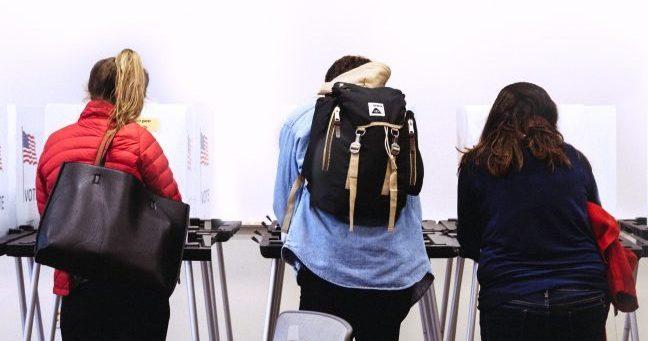The 2016 presidential election was one of the most monumental, especially among younger generations, and is a clear example of the push for student votership. Recently, as more light is being shed on pressing social issues, ranging from women’s control, or lack thereof, over their bodies to the limited rights of immigrants, we have also seen greater division in our country than ever before.
Since elections are centered around varying social, economic and political issues, the beliefs and values of voters are crucial in determining the ruling political climate. Student votership means a rise in educated and, generally, more open-minded individuals having a say in the direction our nation is headed.
In the 2018 midterms, Tufts University’s Institute for Democracy & Higher Education reported 40.3% of 10 million students voted, which was more than double the rate in the 2014 midterms.
What changed in those few years to foster active student participation in our nation’s politics? This could be attributed to increasing efforts to target students’ interests in social advocacy and change by simply choosing to practice their constitutional right to vote.
We often wonder what we, as college students, can do in the grand scheme of things. We wonder whether our protests, social media posts, or open dialogues actually result in anything, especially when the same issues persist, regardless of how much action we take. But understanding “taking action” includes checking a name on a ballot — a name which might potentially be responsible for making the very decisions we all greatly care about — has played a big role in people’s willingness to get out and vote, especially on college campuses.
An article in Inside Higher Ed outlined heightened concern regarding the state of our nation following the 2016 election has driven up engagement among young voters.
“The political climate and President Trump’s controversial rhetoric about issues such as immigration, gun violence, policing, free speech and racial topics spurred increased advocacy among students and drove them to the polls,” Nancy Thomas, director of the Institute for Democracy & Higher Education at Tufts University, said.
As students see the significant impact policy change and implementation can have on their lives and the lives of those around them, they’ve been more motivated to be involved in what’s happening behind closed doors. Gone are the days where politics are only handled by men in suits, going up the stairs of the Capitol. Today, our nation’s politics are in the hands of everyday college students, shouting dissonance and marching down the streets of their campuses.
Why does this matter? So what if college students who haven’t even reached the legal drinking age start voting in the primaries and midterms? As non-problematic, and even exciting, as this is too many, it’s also worrisome to the very people making the laws we want to change.
It comes as no surprise efforts to suppress the student vote are happening, conveniently, following its rise these past few years.
Student voting rates increase after UW encourages voter turnout
The New York Times reported that several states, including Texas, Wisconsin, North Carolina and Tennessee, have imposed voting restrictions and roadblocks, such as voter ID laws and the prohibition of early-voting sites on university campuses in an attempt to hinder students from casting their vote.
“Not coincidentally, the barriers are rising fastest in political battlegrounds and places like Texas where one-party control is eroding,” the article said.
These occurrences are primarily in conservative or right-leaning states which fear opposition from liberal students. This is because 45% of college students identify as Democrats, compared to 29% who called themselves independents and 24% who identify as Republican.
This correlation is similar to the strong evidence of voter suppression among black voters in many conservative states, which exists to this day. While that is more closely linked to this country’s history of institutionalized racism, what’s happening today has everything to do with the fight to keep power in the hands of the people who’ve always held that power.
Student votership is a threat, because it includes a wide variety of individuals from different backgrounds hoping to make a difference within their diverse communities — the same communities who often get the short end of the stick when it comes to our country’s famous promise of “justice and liberty for all.”
Saron Setotaw ([email protected]) is a sophomore studying psychology.














